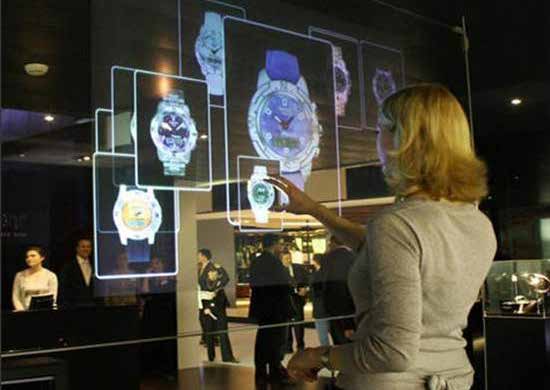
AT THE CROSSROADS BETWEEN PHYSICAL AND DIGITAL: THE FUTURE OF RETAIL
ENGLISH VERSION BELOW / LA VERSIONE IN INGLESE IN SEGUITO
Il fisico e il digitale sono oramai due facce della stessa medaglia: l'interconnessione tra i due mondi crea una serie di vantaggi sia per il consumatore che per l'imprenditore.
Physical and digital are now two sides of the same coin: the interconnection between the two worlds creates a series of advantages for both the consumer and the entrepreneur.
di Olga Bocharova
Molte domande, parecchie incertezze, ma una cosa è indiscutibile: il cambiamento già in essere, accelerato ulteriormente dalla pandemia, porta il business, soprattutto il settore Fashion Retail, a riconsiderare le modalità nel veicolare i propri prodotti e il proprio brand al consumatore.
Secondo l’opinione di gran numero di esperti, uno dei principali driver strategici da considerare per rimanere alla ribalta è la digitalizzazione. Il rapporto di aggiornamento del Coronavirus di State of Fashion 2020 di BoF e McKinsey & Company reputa la digitalizzazione e l'innovazione indispensabili per costruire una strategia di successo a lungo termine.
Ma possono i negozi online sostituire gli spazi fisici oppure la rinuncia all’esperienza d’acquisto in negozio sarebbe un errore dal punto di vista strategico? E’ un interrogativo che si sono posti molti imprenditori. Ora le forze principali delle imprese sono gettate nei canali online: viene constatata la necessità di miglioramento di prestazione delle piattaforme digitali, l’esplorazione di nuove modalità di comunicazione attraverso i social network, ed è comprensibile: nel 2020, secondo i dati dell’Ossevatorio eCommerce B2C di Polimi e Netcomm, il valore annuo di acquisti online in Italia crescerà del 26,7% rispetto all’anno scorso.
La digitalizzazione offre parecchi vantaggi anche dal punto di vista logistico: l’ottimizzazione dei tempi e dei magazzini, la nascita di nuove opzioni per le vendite come click-and-collect e drive-through sono alcuni esempi di applicazione concreta delle tecnologie. Il fattore abilitante fondamentale per tutto questo sono i dati, la cui trasparenza, governance e accuratezza non sono mai state così importanti.

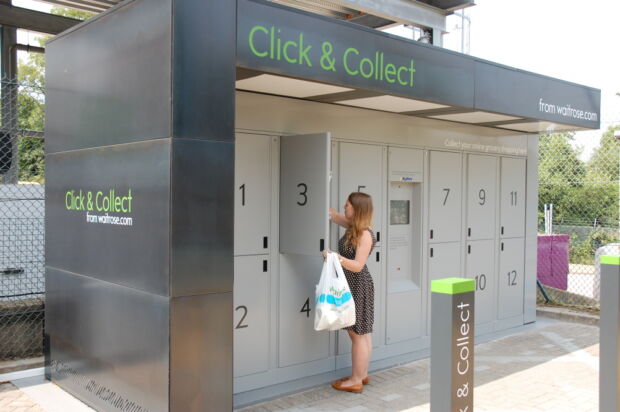
Per quanto riguarda lo spazio tradizionale, le tecnologie servono a trasformare l’esperienza di acquisto in store. Nonostante il timore iniziale di molti commercianti e i risultati incoraggianti dell’e-commerce, le statistiche dimostrano che i negozi fisici rimangono un punto di riferimento per parecchie categorie di consumatori anche ai tempi della pandemia: la boutique risulta un luogo di socializzazione e di identificazione con i valori che il brand promuove, nonché un’isola di “normalità”... ancor di più in un mondo dove l’unica gratificazione disponibile è l’acquisto.
Il negozio quindi deve fare un passo avanti rispetto alle logiche applicate finora e non fermarsi all’omnicanalità. Uno degli aspetti fondamentali sarebbe quello di garantire ai propri clienti l’esperienza d’acquisto in sicurezza: più il brand è pronto a investire in tutela dei propri clienti, più lo sforzo verrà apprezzato. A tal proposito, i distributori multifunzionali possono essere un’ottima soluzione.
Il distributore C-over, disegnato da Bertone Design e prodotto da New Crazy Colors, può servire da ottimo esempio di dispenser smart con le funzionalità estese: offrendo tutto ciò che serve per proteggersi, dalle mascherine ai guanti e all’iginiezzante per le mani, C-over, grazie ai sensori e alle videocamere integrati, è in grado di raccogliere dati necessari per gli scopi di marketing, molto salienti in un periodo così delicato.
L’altro aspetto fondamentale per i negozi post-Covid è quello della customer experience. Lo spazio fisico si trasforma in una vetrina, in quanto non risulti più la fonte principale del fatturato. L’integrazione delle tecnologie digitali quindi permette ai brand manager e agli interior designer di creare scenari coinvolgenti e unici che nessun altro può replicare: quelli più avvincenti attirano nuovi clienti, aumentano la loro fedeltà e, se sono veramente differenziati, garantiscono i risultati positivi.
L’interconnessione tra il mondo digitale e quello fisico si raggiunge attraverso l’integrazione dei sensori all’interno delle vetrine e dei retail stores, permettendo così di rivoluzionare e migliorare la comunicazione visiva del brand e aggiungere ulteriori livelli di contenuto. Una volta sviluppati, i contenuti digitali possono essere veicolati attraverso diverse piattaforme.
SENSORI DI MOVIMENTO PER UN'ILLUMINAZIONE INTELLIGENTE
L’introduzione di sensori di movimento collegati all’impianto di illuminazione consente di creare le scenografie di luce particolari enfatizzando il prodotto di maggiore interesse per il consumatore. Di conseguenza, il cliente viene coinvolto in un’esperienza dinamica e interattiva: nel caso più semplice, la luce si accende sull’oggetto da lui osservato. Il gestore del negozio invece riesce ad ottenere una valutazione precisa dell’indice di gradimento del prodotto esposto ed una profilazione dei clienti per macro parametri.
REALTA' AUMENTATA
La realtà aumentata è uno spazio digitale totalmente artificiale, in cui l’utente si immerge con la possibilità di interagire con l’ambiente esterno e gli oggetti esposti. Essa consiste nel mescolare elementi virtuali con elementi reali che avvolge il cliente, agendo su tutti i sensi e accorciando così le distanze tra il brand e il consumatore.
Grazie alle tecnologie, i brand possono ora disegnare esperienze AR che sono contestualmente legate a immagini statiche, loghi e segni, su qualsiasi superficie, nel mondo reale. Quando un utente punta la propria fotocamera su un’immagine di destinazione, l’effetto viene attivato e appare come una sovrapposizione digitale nella fotocamera. Il contenuto così percepito si presta benissimo alla condivisione sui social e quindi produce un aumento della brand awareness.
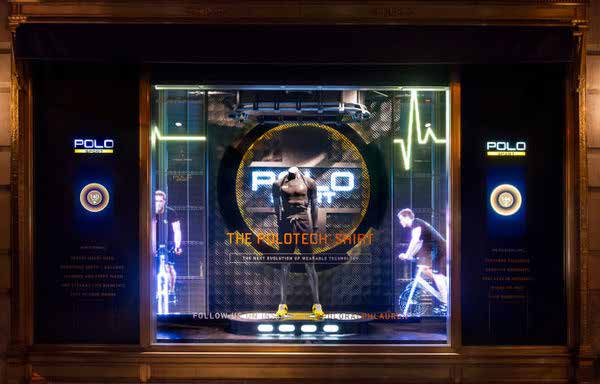
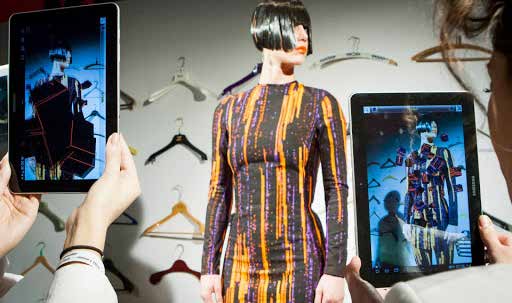

OLOGRAFIA
L'olografia è una tecnica fotografica che permette di replicare fedelmente la realtà o di costruire personaggi o scene di fantasia come se fossero veri grazie all’illusione ottica. Grazie all'orografia e agli ologrammi non siamo noi a immergerci nella realtà virtuale ma è la realtà virtuale che entra nel nostro spazio.
Nonostante le soluzioni siano ben conosciute, l’artefice di un’integrazione equilibrata e accattivante rimane, ca vas sans dire, l'architetto/ l’interior designer che lavora a stretto contatto con il brand manager, perché ogni marchio e ogni spazio hanno le proprie irripetibili caratteristiche da valorizzare. E’ indispensabile inoltre la collaborazione con le aziende attive nell’innovazione per garantire il massimo risultato sia dal punto di vista estetico che quello funzionale.
. . .
Many questions, many uncertainties, but one thing is indisputable: the change already in place, further accelerated by the pandemic, leads the business, especially the Fashion Retail sector, to reconsider the ways in which its products and brand identity are conveyed to the consumer.
According to the opinion of a large number of experts, one of the main strategic drivers to be considered in order to return to the fore is digitalization. The State of Fashion 2020 Coronavirus Update Report from BoF and McKinsey & Company deems digitalization and innovation indispensable to building a long-term successful strategy.
But can online stores replace physical spaces or would giving up on the in-store shopping experience be a mistake from a strategic point of view? It is a question that many entrepreneurs have asked themselves. Now the main forces of companies are thrown into online channels: the need for improving the performance of digital platforms, the exploration of new methods of communication through social networks is certain, and it is understandable: in 2020, according to the data of the Observatory B2C eCommerce by Polimi and Netcomm, the annual value of online purchases in Italy will grow by 26.7% compared to last year.
Digitization offers several advantages from a logistical point of view: the optimization of times and warehouses, the creation of new options for sales such as click-and-collect and drive-through are some examples of concrete application of the technologies. The key enabling factor for all of this is data, whose transparency, governance and accuracy have never been more important.
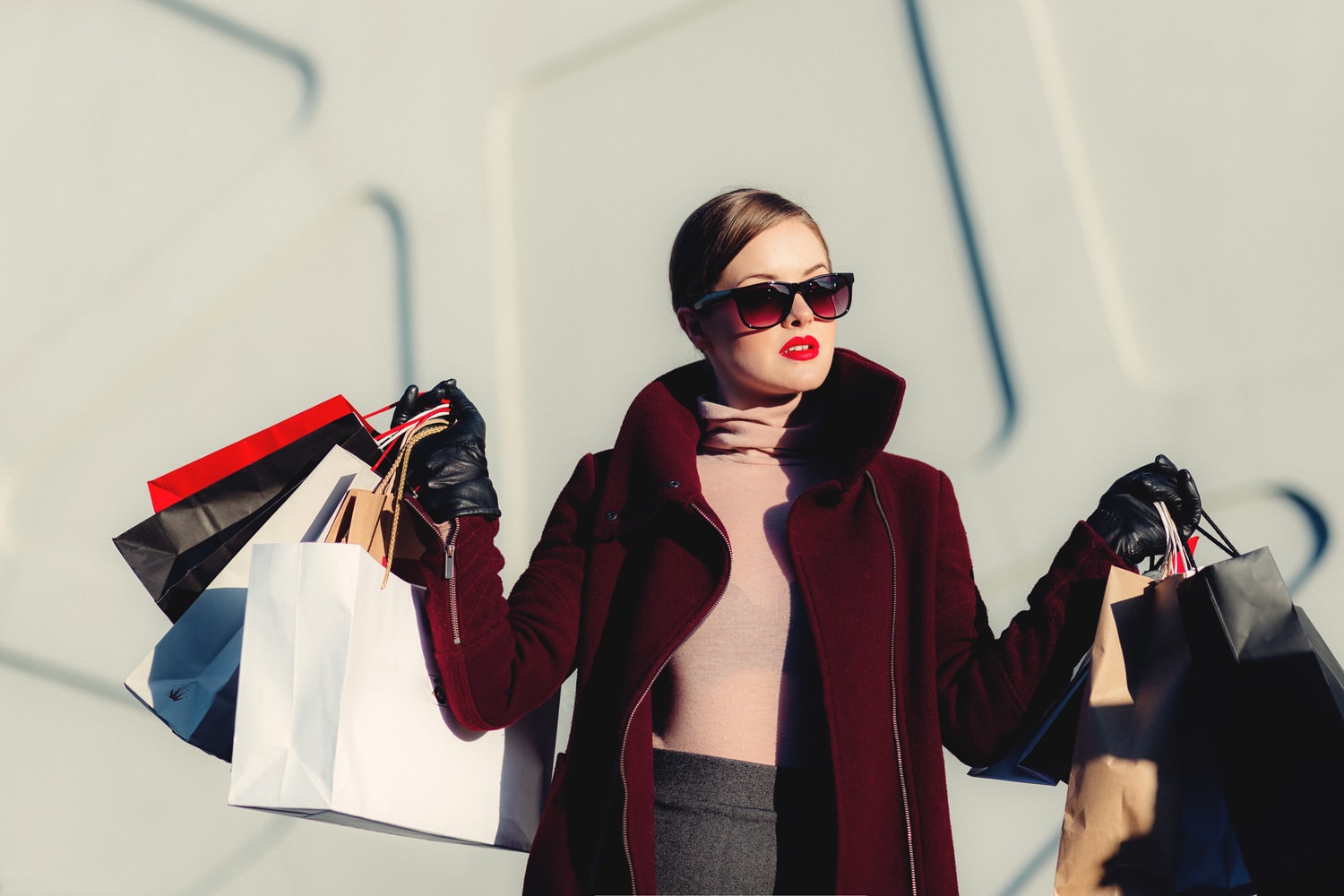

As for the traditional space, technologies serve to transform the in store shopping experience. Despite the initial fear of many merchants and the encouraging results of e-commerce, statistics show that physical stores remain a reference point for several categories of consumers even at the time of the pandemic: the boutique is a place for socialization and identification with the values that the brand promotes, as well as an island of "normality" ... even more in a world where the only gratification available is the purchase.
The store must therefore take a step forward with respect to the logic applied so far and not stop at omnichannel experience. One of the fundamental aspects would be to guarantee the customers safe shopping: the more the brand is ready to invest in the protection of its clients, the more the effort will be appreciated. In this regard, multifunctional distributors can be an excellent solution.
The C-over dispenser, designed by Bertone Design and produced by New Crazy Colors, can serve as an excellent example of a smart dispenser with extended functionality: offering everything you need to protect yourself, from masks to gloves and hand primer, C-over, thanks to the integrated sensors and cameras, is able to collect data necessary for marketing purposes, very salient in such a delicate period.
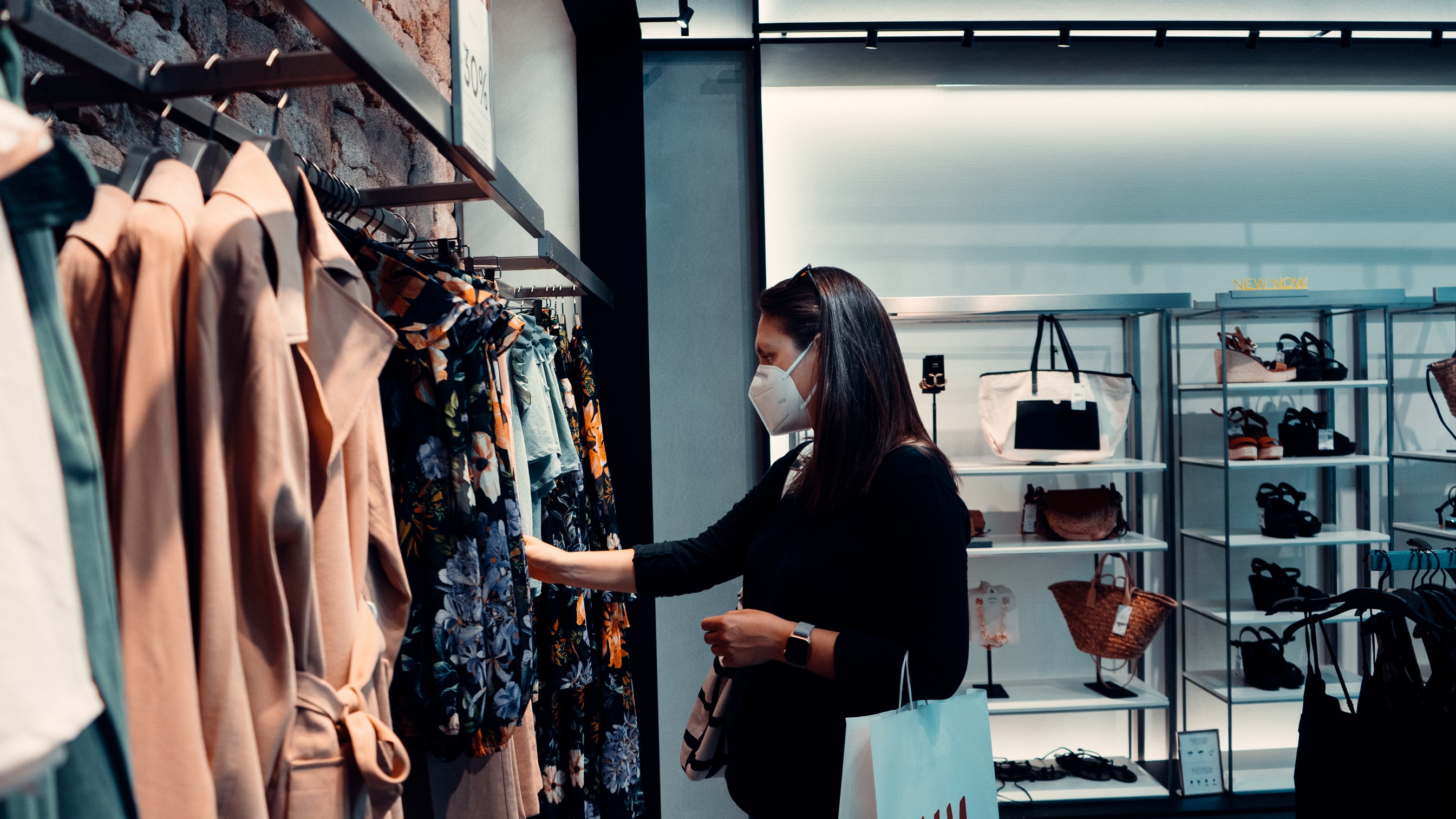
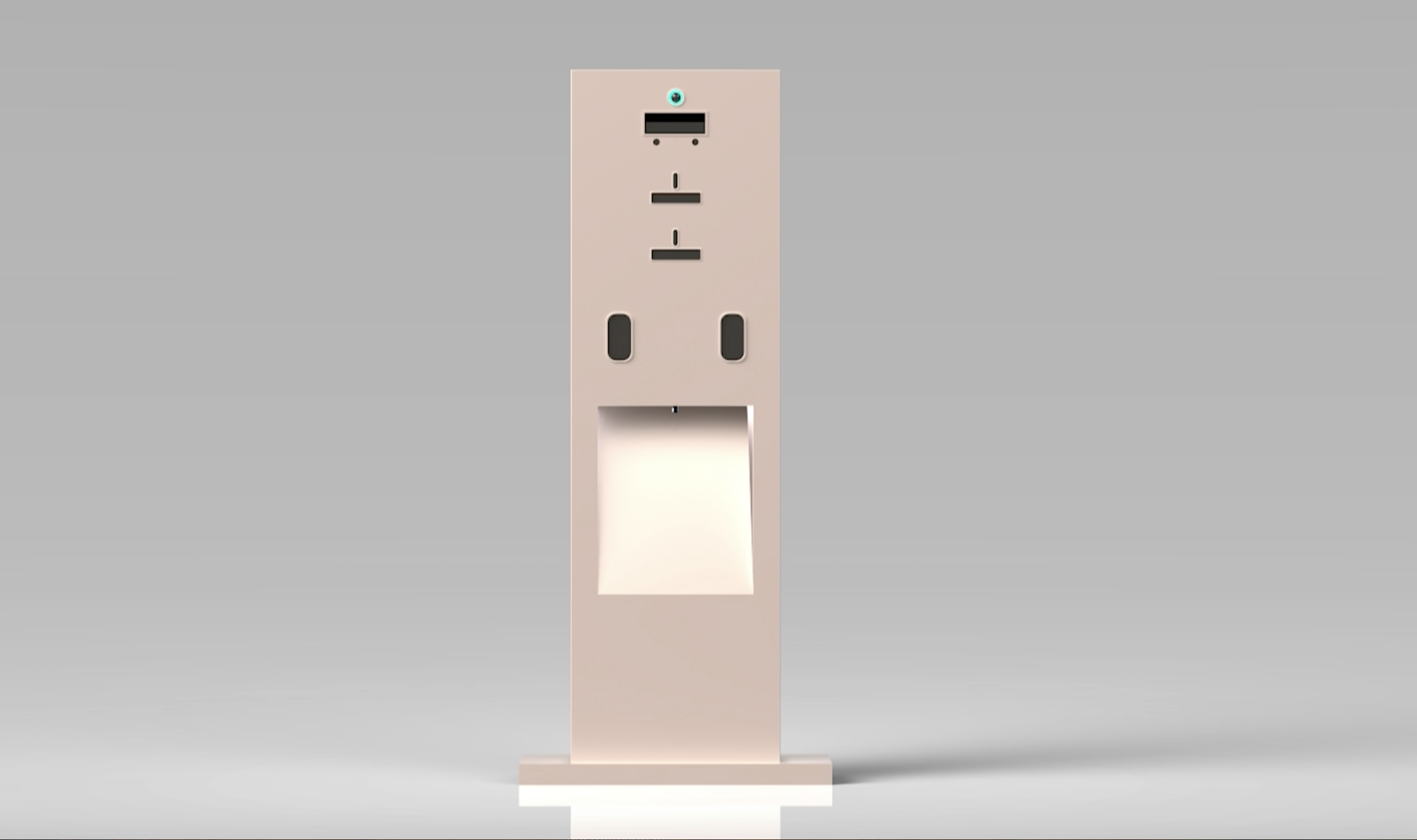
Another fundamental aspect for post-Covid stores is that of the customer experience. The physical space is transformed into a showcase, as it is no longer the main source of turnover. The integration of digital technologies therefore allows brand managers and interior designers to create engaging and unique scenarios that no one else can replicate: the most compelling ones attract new customers, increase their loyalty and, if they are truly differentiated, guarantee positive results.
The interconnection between the digital and physical world is achieved through the integration of sensors within the shop windows and retail stores, thus allowing to revolutionize and improve the visual communication of the brand and add supplement levels of content. Once developed, digital content can be conveyed through different platforms.
MOTION SENSORS FOR INTELLIGENT LIGHTING
The introduction of motion sensors connected to the lighting system allows you to create particular light scenes, emphasizing the product of greatest interest to the consumer. Consequently, the customer is involved in a dynamic and interactive experience: in the simplest case, the light turns on on the object observed by him. The store manager, on the other hand, is able to obtain a precise evaluation of the approval rating of the displayed product and a customer profiling by macro parameters.
AUGMENTED REALITY
Augmented reality is a totally artificial digital space, in which the user immerses himself having the ability to interact with the external environment and the objects on display. It consists in mixing virtual elements with real ones that surround the customer, acting on all the senses and thus shortening the distance between the brand and the consumer.
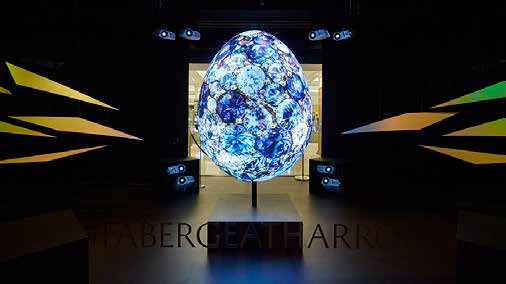
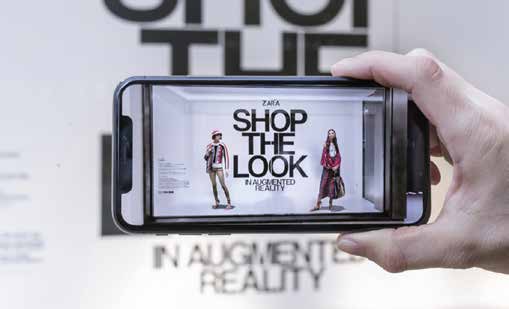

Thanks to technologies, brands can now design AR experiences that are contextually linked to static images, logos and signs, on any surface, in the real world. When a user points their camera at a target image, the effect is activated and appears as a digital overlay in the camera. The content thus perceived lends itself very well to sharing on social networks and therefore produces an increase in brand awareness.
HOLOGRAPHY
Holography is a photographic technique that allows you to faithfully replicate reality or build characters or fantasy scenes as if they were real thanks to the optical illusion. Thanks to orography and holograms, it is not us who immerse ourselves in virtual reality but virtual reality that enters our space.
Although the solutions are well known, the architect of a balanced and captivating integration remains, ca vas sans dire, the architect / interior designer who works closely with the brand manager, because every brand and every space has its own own unique characteristics to be enhanced. Collaboration with companies active in innovation is also essential to ensure the best results from both an aesthetic and functional point of view.

